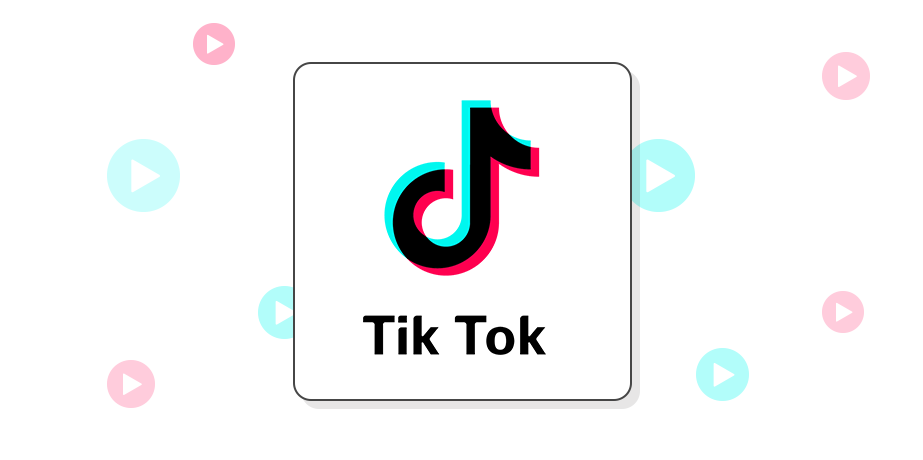
8 Easy Steps to Build Your Social Media Marketing Strategy in 2025
How difficult could it be to create a social media marketing strategy?
While it seems like a straightforward thing, believe me, it isn’t and you surely wouldn’t want to fail it.
Why? Because over 3.7 billion people actively use social media daily! This makes social media one of the most crucial channels for business growth in the digital marketing era that we’re living in.
Not only because it allows you to raise awareness about your brand, but also because it strengthens the relationship with your customers and ultimately improves sales.
The thing is, though, that you can’t just jump right into social media. You need a solid social media strategy to make it all work.
So follow me and learn everything there is to know about social media marketing!
What Is Social Media Marketing?
Social media marketing is the utilization of social media platforms with the purpose of promoting a product or service.
It involves the creation of content tailored to the specific context of each social media platform, with the aim to engage the audience and boost conversions.
As Gary Vaynerchuk has eloquently said: “Content is king, but context is God.”
What this means is that content works differently on each platform.
Therefore, it’s crucial to adjust your social media marketing strategy accordingly to achieve maximum results.
The whole concept behind social media marketing lies in reaching your target audience and customers where they hang out and interact with each other.
In particular, businesses that successfully take advantage of social media have seen their ROI (return on investment) improve by up to 119%.
And now that we’ve laid the fundamentals of social media marketing, let’s see how it is beneficial for your business.
Benefits Of Social Media Marketing
The importance of social media marketing is obvious since over 97% of marketers are using social media in their marketing efforts.
It’s shocking, however, that some businesses seem to undervalue the benefits of social media marketing.
Surveys show that 50% of small businesses aren’t using social media to promote their brand.
Below is a list of the most important benefits, so you can decide on your own if it is indeed worth it.
1. Improved Brand Awareness
For the majority of businesses, gaining brand recognition is one of the most important marketing goals.
Social media allow businesses to expose their brand in front of a tremendous amount of people.
As of July 2020, social media penetration reached an impressive 51%.
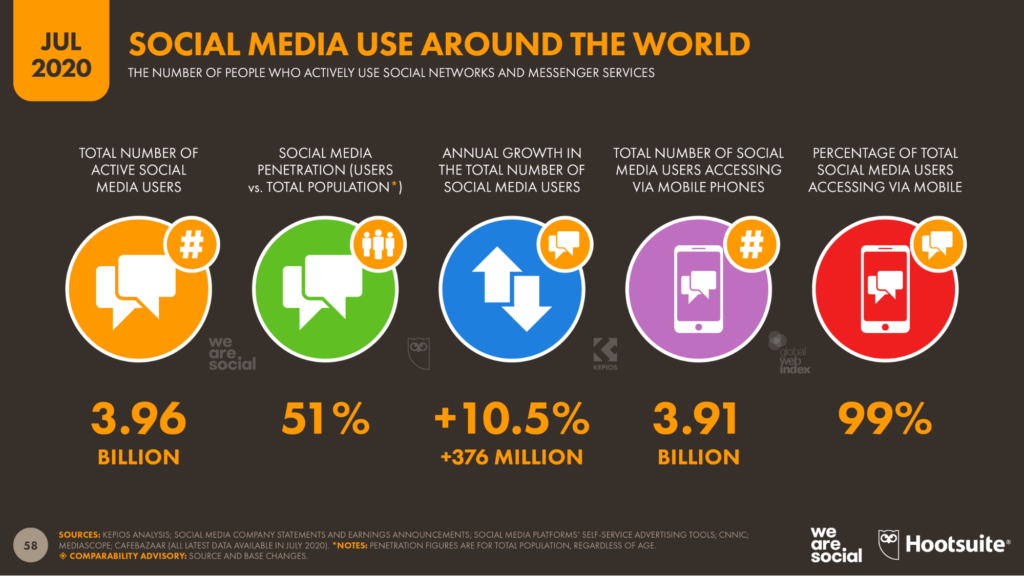
So, sharing content relevant to your product on social media platforms is essential to increase brand awareness.
And it’s a fact that consumers prefer to buy products from brands they recognize.
What’s more, you engage your audience and get them talking. Likes, shares, re-posts do play a role.
The more people interact with your content, the more you establish your reputation as a business.
2. More Organic Traffic
If your business isn’t marketing on social media, then your traffic is probably limited to your existing customers.
Integrating social media into your marketing strategy provides the opportunity to acquire new customers since you can reach anyone outside your loyal customer circle.
Consumers of different age demographics search for products in a totally different way.
So, sharing your content on available social media platforms enables all these individuals to organically reach your company.
3. Higher Ranking in Search Engines
There has been a controversial debate going on for years regarding the SEO impact of social media.
While social media don’t directly improve search engine rankings, according to Sproutsocial, Google “acknowledges” shares, retweets, and click-throughs as positive search signals.
Not to mention that pieces of content that are “popular” in terms of likes and shares can bring some decent referral traffic to your website. So that’s like an extra bonus!
Additionally, social media posts could potentially grab industry influencers’ attention, who might write about your company and provide generous backlinks.
This would definitely mean higher rankings in SERPs.
4. Lead Generation and Boosted Conversions
Promoting your products on social media is also an easy way to increase lead generation and ultimately sales.
This is because you are advertising to an audience that has willingly engaged with you by following your social media profile.
More importantly, when a brand interacts with its audience through posting or commenting on social statuses, it gets personified.
And we know that people like to do business with people, not companies.
What’s more, people tend to trust companies that have an active social presence easier.
Let’s see some examples of how you can use social media to generate leads and drive more conversions:
- Contests: Who doesn’t like to be given free stuff? Contests are helpful because people are usually compelled to buy from a brand they have received free stuff before.
- Calls-to-action: A call to action motivates the visitor to do something. Below is a good example from CoSchedule. They employ fancy visuals to attract the audience’s attention.

- Selling your product through your social profile: For example in Facebook’s Shop Section. There your visitors or followers can browse the product’s information such as price, material, etc., and make a direct purchase through the platform. However, this is impossible if the product is digital.
5. Customer Support and Relationship Building
Customers nowadays expect companies to be able to handle their requests through social media too.
This allows you as a business to establish a strong relationship with them if you meet their needs.
The thing with social media is that interaction and customer support can be instant.
Answering customers’ queries and interacting with them in the comments is critical in showing them that you care as a brand.
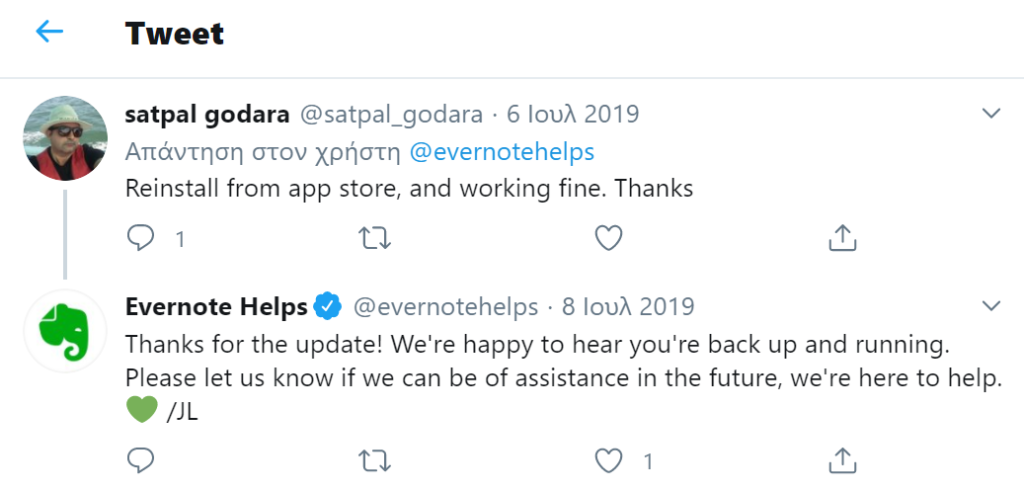
Finally, listening to their complaints and providing support in a personalized way is the key to establishing brand loyalty.
6. Cost-Effectiveness
Creating a social media profile and sharing high-quality content is free.
For the majority of people, that’s more than ideal.
But if you decide to go the extra mile and invest in paid promotion, know that your ROI will be huge.
The reason? It is because social platforms direct your ads towards people who are interested in what you’re offering.
And most important of all, the cost for such promotion will be relatively lower compared to other marketing tactics.
So, social media marketing is a must for your advertising strategy.
7. Competition insights
It may look like a no-brainer but social media is an excellent way to monitor the activity of your competitors.
You can get valuable data about their tactics, the social media campaigns they’re implementing, and others.
By figuring out what’s working for them and what doesn’t, you can adjust your social media strategy to maximize your efficiency.
Additionally, social media allow you to see the level of interaction your competitors have with their audience.
It doesn’t harm to know where your competitors lack in, since you can turn that to your advantage and potentially target their dissatisfied customers.
Social Media Platforms for B2B and B2C
In the previous section, the advantages of social media marketing became quite clear.
Now is the time to look at the most prominent social platforms to this day.
You’ll notice that each platform has its individual distinctive characteristics and therefore it may favor B2B audiences or B2C, or even both.
At the top of the list stands Facebook with almost 1.79 billion daily active users.
It’s probably your safest bet if you want to be present on social media since more than 80 million small businesses use Facebook in order to grow.
Its audience is very broad but mostly consists of Generation X and millennials.
Facebook is particularly impactful in both B2B and B2C contexts due to its broad audience.
Its inherent ability to connect people with products and services is ideal for businesses that want to:
- increase brand awareness
- promote positive word of mouth
- strengthen customer relationships

Another key strength of Facebook is the advertising options it offers.
Apart from classic targeted ads, having a business Facebook page allows you to run Facebook lead ads that help grow your email list and increase your conversions.
It may not be one of the biggest social media platforms, but it has definitely seen immense growth over the past 10 years.
LinkedIn has evolved into a professional social media network, where industry professionals can share content, promote their brand, and network with each other.
Usually, the content shared on the platform is highly informative and educational, such as infographics, statistics, etc.
According to estimations, the monthly active users are approximately 310 million.
The audience on LinkedIn is also very broad with the addition of older demographics.
LinkedIn can be extremely useful for businesses since it helps them:
- establish their thought leadership
- attract top-of-the-funnel quality leads
- advertise successfully through targeted personalized ads
- form strong B2B relationships
In fact, it is considered by many as the gold standard for B2B social media.
Twitter has an impressive audience base of 126 million daily active users worldwide.
Its uniqueness lies in the emphasis it gives on real-time information.
And of course the 280-character limit per tweet, unlike most of the other platforms.
Twitter’s audience is composed of people under the age of 50, and mostly millennials.
It can have a positive impact on a business because it allows business owners to listen and then leverage consumer opinion with the aim to create relevant and engaging content.
Include a CTA in some of your tweets and you’ll see tremendous engagement.
Finally, Twitter is particularly strong as a customer service channel.
In fact, advertisers admit that over 80% of their inbound social customer service requests take place on Twitter.
As you probably know, Instagram is a social platform heavy on eye-catching content and inspiring creativity.
Over 1 billion people actively use the platform each month.
What’s more, there is an astonishing number of businesses using the platform. 25 million specifically!
Of course, having a business Instagram account supplies you with rich analytics and post-scheduling tools via third parties.
It wouldn’t be an overstatement to claim that Instagram is a platform that product-based businesses can thrive.
It gives brands the opportunity to:
- showcase their products
- humanize their content
- connect with a massive audience and inspire them
- increase engagement through Instagram giveaways

But that’s not all.
Instagram helps grow brand awareness since many people naturally search for brands on this platform.
Also, by posting user-generated content on Instagram businesses can see tremendous value in terms of brand loyalty and appreciation.
As for its audience, it’s a goldmine if you’re targeting millennials or people under 40.
Be sure to check out our actionable Instagram marketing tips that you can implement in your business!
TikTok
TikTok is a music video social network exhibiting rising success.
It is estimated to have around 800 million monthly active users, while its audience currently consists mostly of Gen Z people.
From a marketing perspective, this doesn’t sound great yet, but age demographics are gradually increasing.
It can definitely have a positive effect on B2C companies looking to serve young people’s interests mostly.
Moreover, it is an excellent medium for marketing experimentation!
And if your marketing team is super creative and understands the Internet culture, then you may be on the fast track to success.
Take a look at an example of Chipotle nailing TikTok marketing.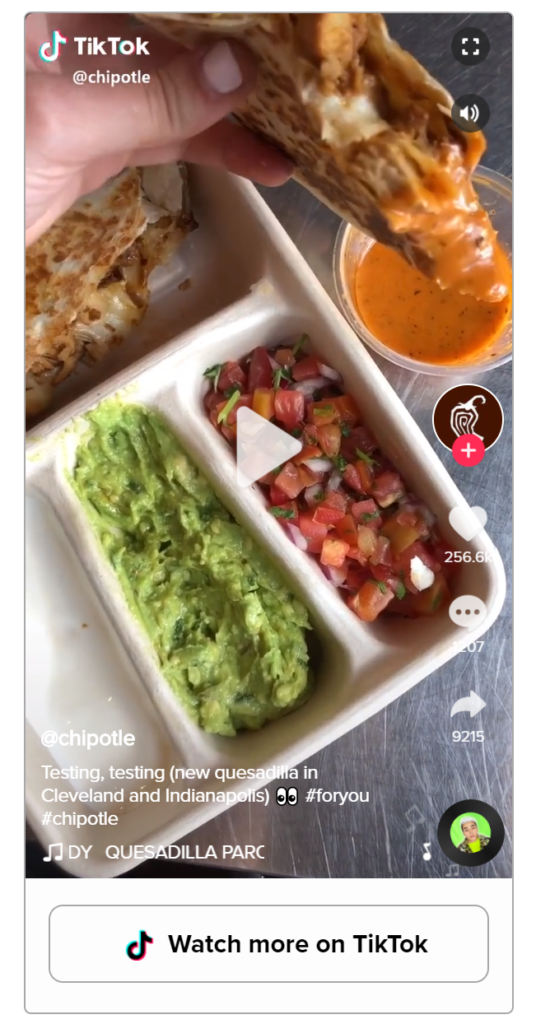
It’s as if the chips are singing along with Adele! Whaaat?
Besides having an ingenious bio “Less Tok, More Guac”, they did a #boorito campaign for Halloween that attracted over 4 billion views on the platform.
Don’t forget to check our article on how to use TikTok for business and learn how to promote your brand there.
Snapchat
Snapchat has sure been “hit” hard since the rise of Instagram stories but it’s still keeping strong.
With 238 million daily active users worldwide, it is a perfect medium to reach your audience.
And especially those young ages, Gen Z and millennials.
Snapchat is ideal for:
- raising brand awareness
- promotion through user-generated content
- behind-the-scenes videos
- exclusive product offers and teasers
It is also a good way to exhibit the human side of a brand.
Here is an example of how Coca-Cola leveraged Snapchat for business to promote their brand through a cool filter that Belgians loved.
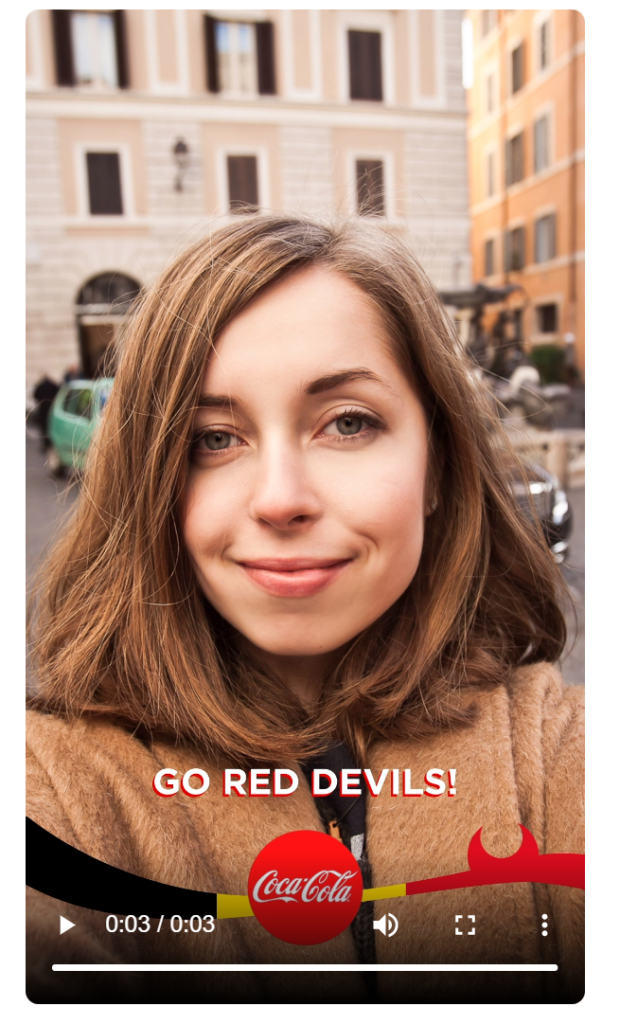
YouTube
It’s the second biggest social media site having more than 2 billion monthly users
It is an essential part of any promotional strategy.
Why? First of all, because it’s owned by Google.
Also, think of it as the second-largest search engine after Google itself!
If you add to that the compelling nature of video in marketing, it can work miracles.
When used smartly, it can generate loads of traffic for a business as well as boost conversions.
Some examples of social media marketing through Youtube are:
- live webinars that educate a business’ audience
- Q&A videos
- testimonials that help establish trust in the brand
- how-to videos
And the cherry on top? Your content stays on the platform forever!
Pinterest has 416 million monthly active users worldwide.
Its audience consists mostly of older millennials and younger baby boomers.
Pinterest’s main focus is to provide inspiration to people, unlike other platforms that aim at engagement.
Therefore, any piece of content that is rich in visuals can thrive on Pinterest. This makes the platform ideal for visual advertising.
Pinterest mentions that the vast majority of its users consider content from brands useful—much higher than on other social platforms.
This is an excellent opportunity for brands to guide the audience’s purchasing decisions. IKEA is an example of a global brand that successfully uses Pinterest in an innovative way.
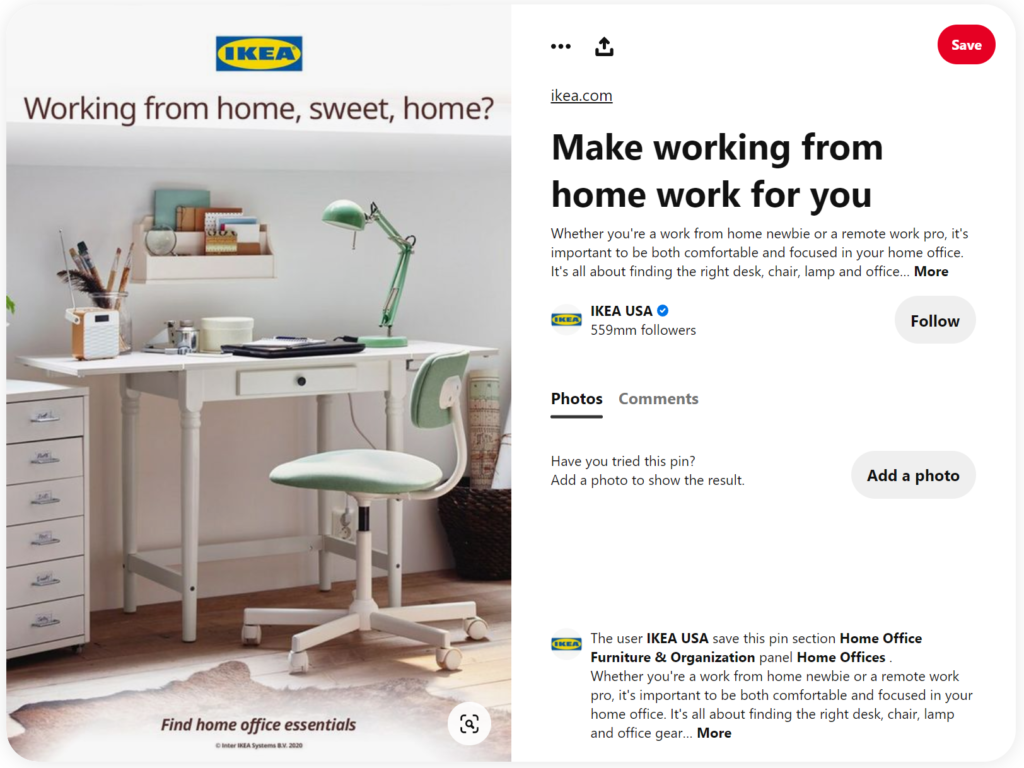
As you can see, they launched a Pinterest campaign targeting people working from home, either due to the current pandemic or because they worked like this before.
Their success lies in the fact that they’ve captured people’s buying intent and provided ideas on it.
How to Develop a Social media Marketing Strategy
Many businesses venture into social media marketing without really understanding what they need to do.
So, they often fall into the “trap” of posting for the sake of posting. And this has zero value for their brand.
Therefore, it is essential to create a social media marketing strategy, a plan that will guide your business and allow it to measure its success.
Let’s see how you can create your social media marketing strategy in 8 easy steps:
1. Set S.M.A.R.T. Goals
The first step of every successful marketing strategy is to establish your objectives.
What are you expecting to achieve by going on social media?
Without clear goals, it will be extremely difficult to measure success and calculate your ROI (return on investment).
This is why your goals need to be S.M.A.R.T.
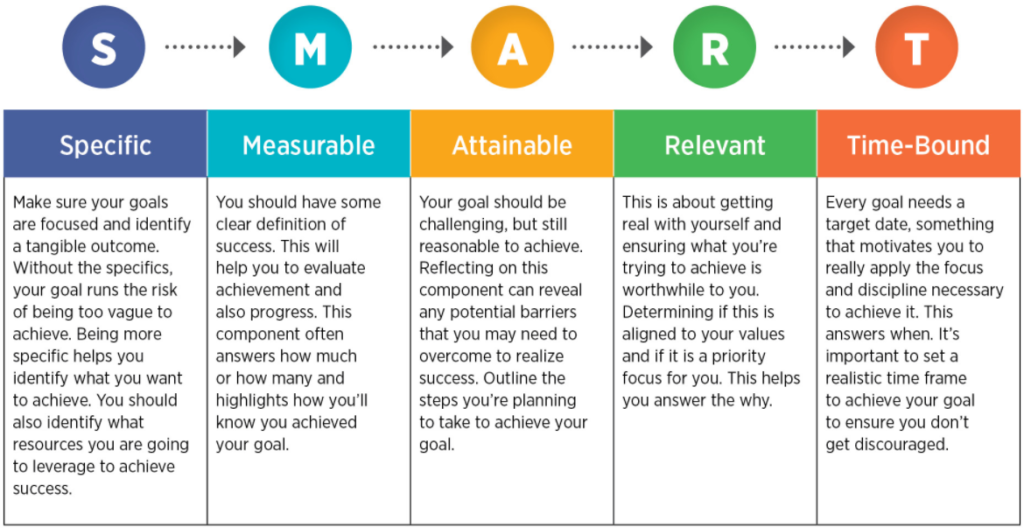
Set realistic and attainable goals that will challenge your business in order to improve.
But be sure that they are meaningful.
Don’t get tangled into vanity metrics such as the number of likes, followers, etc unless that’s what you aim for.
To make an example, let’s say you want to utilize Twitter in order to provide customer support.
A SMART goal could be to provide an answer to requests in under an hour during the first 3 months.
Remember that every business has different goals, and, therefore they are the ones that will guide the rest of your strategy.
Other SMART goals your business might set are:
- increase brand awareness
- drive traffic to your website
- improve online sales
- strengthen customer support
- build a community around your brand
Word of advice: Don’t stress to succeed on every social network, since they are too many and your resources are probably limited.
2. Research and Define Your Audience
The next step is to find out who is your audience and start creating your buyer personas. Think of buyer personas as a categorization of your audience based on their age, profession, interests, etc.
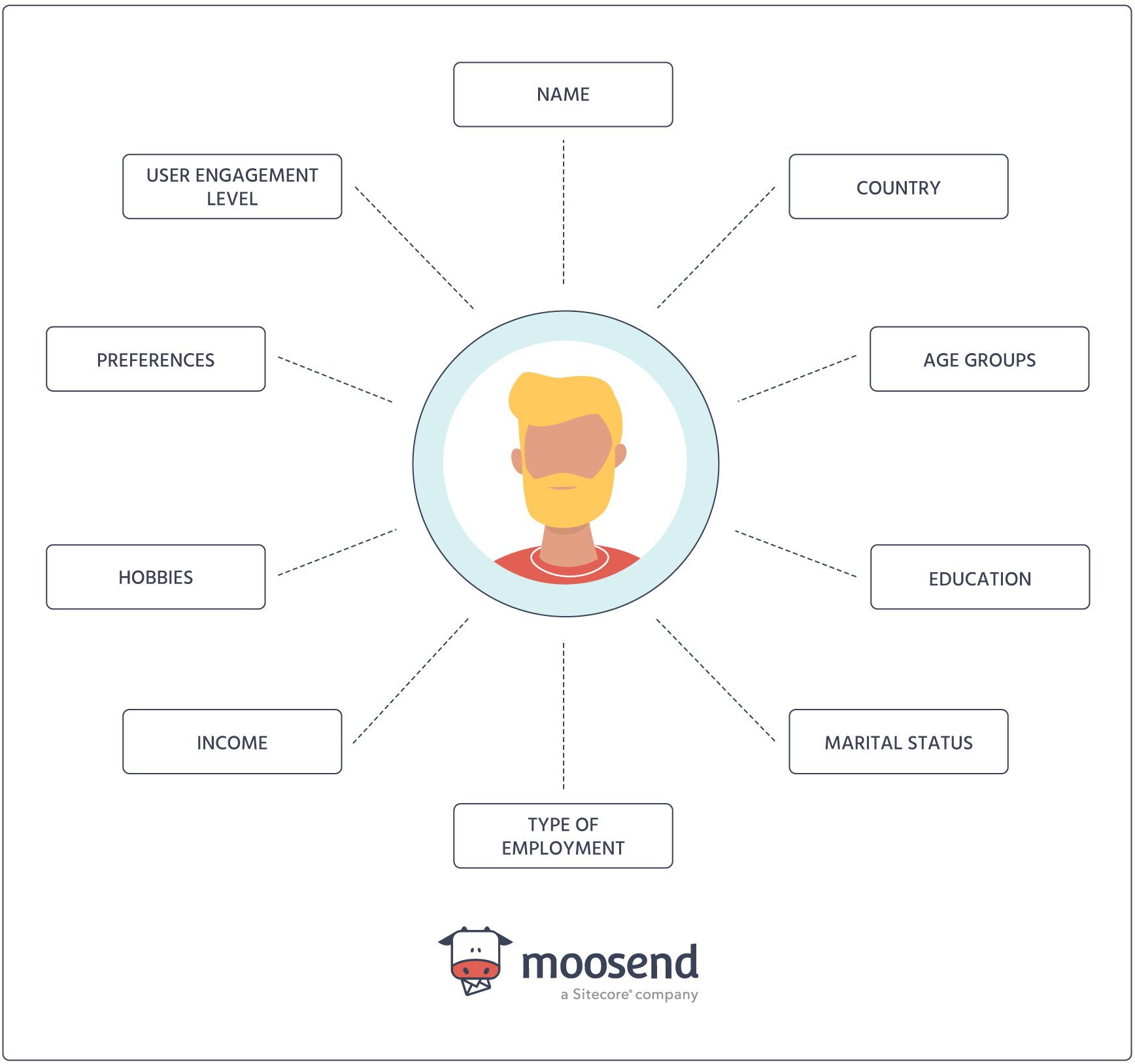
This classification allows you to target their needs and interests more accurately.
It is also essential if you want to turn your social media audience into customers.
Understanding your audience and creating buyer personas will enable you to create the type of content that ideally attracts those followers you want.
After all, what’s the point of creating content that doesn’t resonate with the people following your social media account?
Last but not least, avoid making arbitrary assumptions. Use social media analytics. They provide tons of information about the characteristics of your audience and how they interact with your brand.
The better you know your target audience, the better your strategy will be.
3. Select the Appropriate Social Media Channels for Your Audience
The next crucial part is to determine which platforms you’re going to share your content on.
Remember: There is no right or wrong choice here when it comes to selecting a social channel for your business.
It’s all about your target audience’s needs and where they tend to spend their time now, as well as in the future.
As Hubspot’s social media marketing manager (SMM), Andrew Delaney, eloquently says “It’s better to be ahead of the curve than behind.”
So, if you’ve done a good job understanding your audience in the previous step, things will be much easier.
If you’re just starting out on social media, it might be a good idea to focus on one social platform initially, until you get comfortable.
4. Set up Your Social Media Accounts
You’ve chosen the desired social platforms. Now it’s time to create and set up your social media profiles. Or improve the existing ones!
Fill out all profile fields correctly. Include keywords that people might be using when searching for your business.
Use a consistent visual look across all your social channels. Any logos, colors, and graphics need to be similar across platforms.
It is essential that the images you upload are of high quality and follow the recommended dimensions for each platform.
And finally, keep in mind that any extra info you wish to include in your profile must pique the visitor’s interest and not spam him.
5. Scrutinize Your Competition
Before you begin creating and posting content, you should investigate your competitors’ approach to social media.
By reviewing your competitors’ social presence, you can get tons of useful insights about how to form your very own strategy.
- What’s their focus?
- Who are they targeting?
- What keyphrases are they targeting?
- How is their audience interacting with their brand?
- What hashtags are they using?
All these are examples of what to look for when you do your competitor analysis.
The goal here is not to copy exactly what they’re doing, but to adapt your social media marketing campaigns based on the conclusions you drew and make them better.
This process will also allow you to spot opportunities out there. For example, one of your competitors may be putting all his efforts on Facebook, while having little or no presence on LinkedIn.
This could be an excellent opportunity for you if your research indicates that your audience is also present on that social platform.
And at the same time, you avoid head-to-head competition in a platform where your competitor already has a “strong game.”
Finally, you may choose to use a social media management tool, like Hootsuite or Sendible, which will allow you to monitor keywords and manage social accounts in real-time.
6. Create Original and Engaging Content
Now, the central part of your social media strategy, CONTENT!
By now you probably know what kind of content you need to create in order to engage your audience and differentiate your brand from the competition.
Try to focus not only on the “type” of content but also on the content theme.
Having one or more rotating themes is essential so that your social account looks focused and clear to your audience. For example, you might choose to cycle through user-generated content, product photos, and live videos.
Themes can also be particularly helpful if your company needs consistency. Remember to take advantage of the unique characteristics of each social platform you’re using.
For example, you can encourage user-generated content with the use of a specific hashtag, like the picture below.
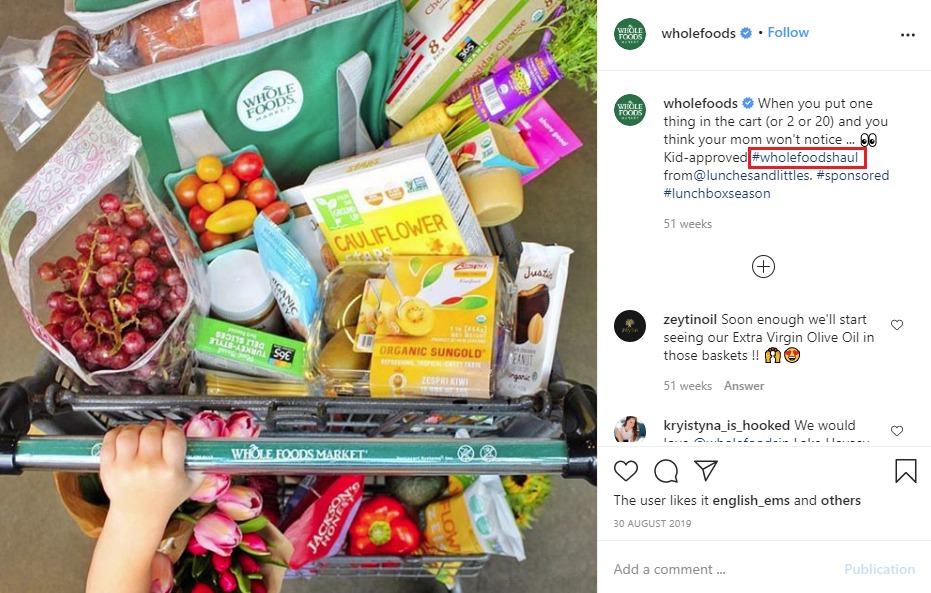
Or leverage Twitter’s limited character style to make an engaging and insightful poll that your audience will appreciate.
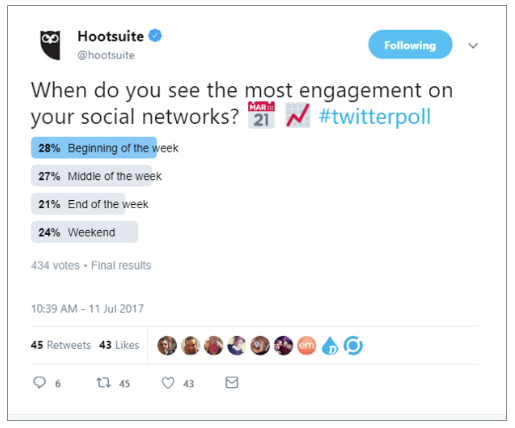
At this point, I should also stress the importance of videos in your overall social strategy.
Long-form, as well as short-form video productions, seem to be present across all platforms.
Even huge brands have joined this trend with the production of micro-commercials that they share on Facebook, Instagram, etc while getting millions of views.
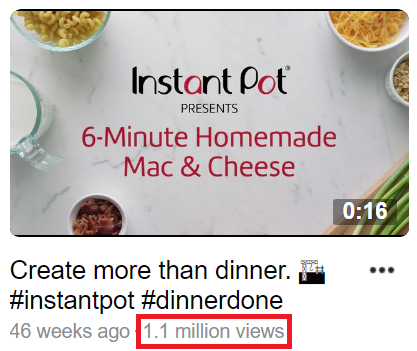
7. Create a Social Media Content Calendar
Creating your content is one thing.
However, it’s equally important to have a plan about when sharing your content is going to have the maximum impact on your audience.
You may have seen numerous guides about the “best times” to post on social media. Let me tell you though. There is no universal time that works for every business. You need to figure this out by experimentation and data obtained from your audience.
And always keep in mind that your social media managers need to be available to answer questions and reply to comments after posting a piece of content.
Otherwise, this may negatively impact engagement. A content calendar is the solution to the problem of scheduling.
It will involve the exact dates and times that you will be publishing content as well as the types of content scheduled for publishing. Not only does this ensure timeliness, but it also minimizes the risk of “rushing” to post for the sake of posting.
Keep in mind that you should post ideally when you have quality content to share.
There are various social media management tools that you can use to make your life easier, such as Sprout Social and Hootsuite, to name but a few.
In case you’re wondering what would be a good content mix, I’d say the 80-20 rule. This means that 80% of your posts should be informative or educational, while the other 20% should focus on the direct promotion of your brand.
Word of advice: Scheduling and organizing your posts ahead of time will allow you to easier track your goals and make possible adjustments to your strategy.
8. Evaluate your results and optimize
Despite all the planning and organizing, there can never be any guarantee that things will go exactly as planned.
That is why it is vital that you track your results, in order to ensure that you’re making successful efforts to achieve your goals. To do this, you need to monitor your social media metrics.
These metrics usually include data on the amount of engagement, number of likes, shares, etc. Most social platforms have their own analytics tools, which will provide the majority of the data you require.
Find your top-performing content, discover what makes it successful, and use the recipe to improve your following campaigns.
You can also use A/B testing to pinpoint whether your adjustments brought better results.
Social media are constantly evolving, so you must opt to get the most out of your existing campaigns and make small tweaks, rather than time-consuming changes.
However, this shouldn’t scare you from making the necessary changes that will reflect your new plans and goals. Optimization is a dynamic process that allows your content to become better and increase the engagement of your audience.
For example, you may not be seeing the audience growth or engagement you’re looking for. Maybe it’s time to run some paid social ads to increase visibility and attract potential customers.
So, ultimately, you’ll be adjusting your strategy along the way to achieve the optimal results.
How Much Does Social Media Marketing Cost?
We’ve reached the point that the obvious question emerges. How much is it gonna cost me to do social media marketing?
Well, the most straightforward answer is it depends!
If you’re completely new, it’s possible to start social media marketing with zero budget and aim to attract as much organic traffic as you can and drive interaction with your brand.
A good DIY solution with a reasonable cost would be a social media marketing tool like Buffer which would facilitate all your social marketing efforts.
The cost of it starts at $15/month.
If you decide that you want to extend your reach more, you can strategically start running paid ads.
Ads on social media are mostly targeted to specific audiences and therefore they usually show great ROI.
You can run some Facebook ads for example with only a few dollars!
The reality is that most companies spend more and more money on social media advertising since it is extremely impactful.
In fact, by 2023 social media advertising spending is predicted to reach a whopping £145 million.
Finally, if you choose to employ an agency to do everything for you, you’re looking at a cost starting from $900-7000/month.
Bottom line
Hopefully, you’ve learned a ton about social media marketing.
Now you know why social media is an integral part of any modern marketing mix!
So, what are you waiting for?
Start working on your strategy today, study your competitors, and differentiate your brand from the others like a boss.
Best of luck and.. happy posting!
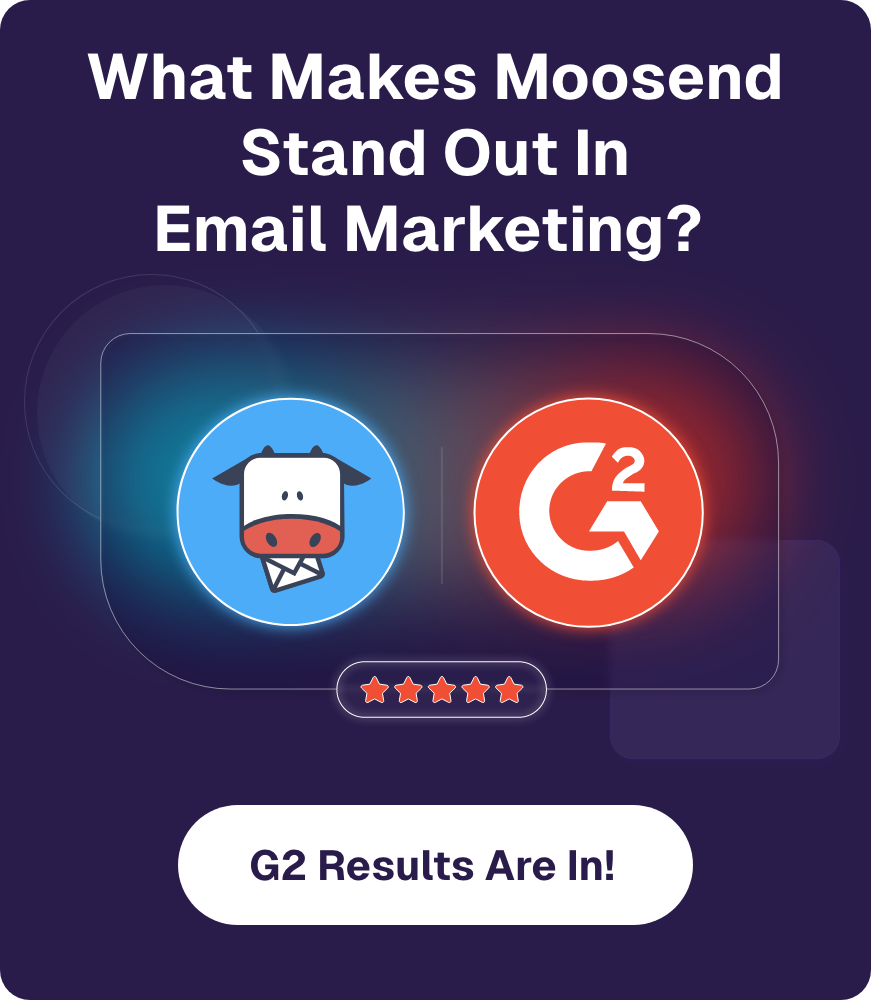

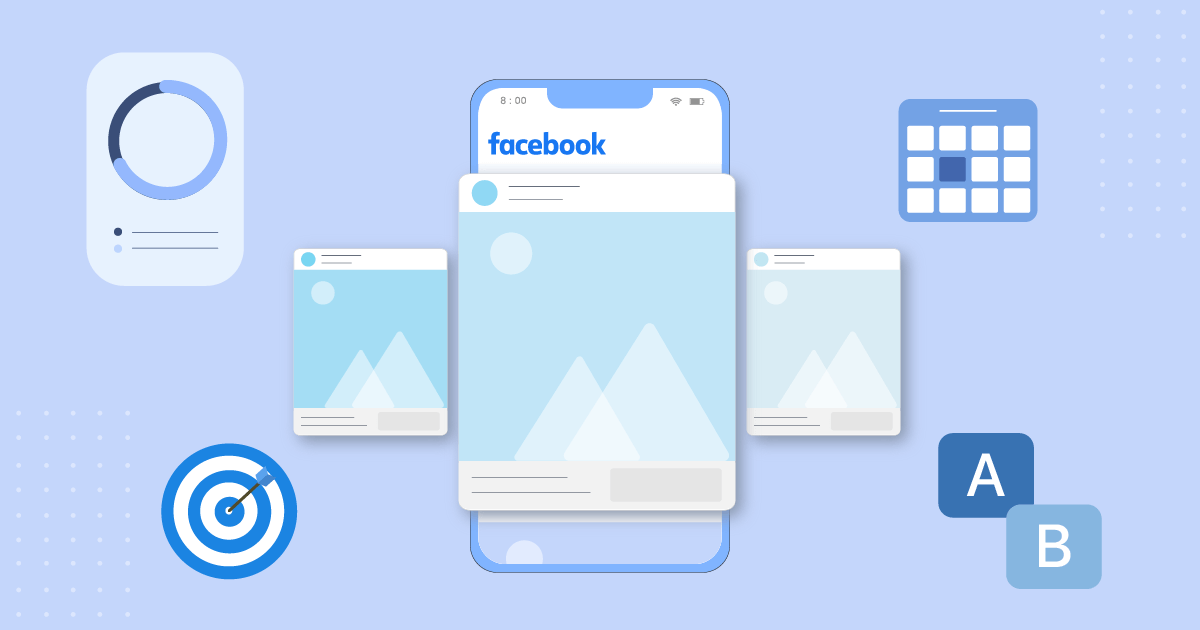
 Published by
Published by

 Published by
Published by
